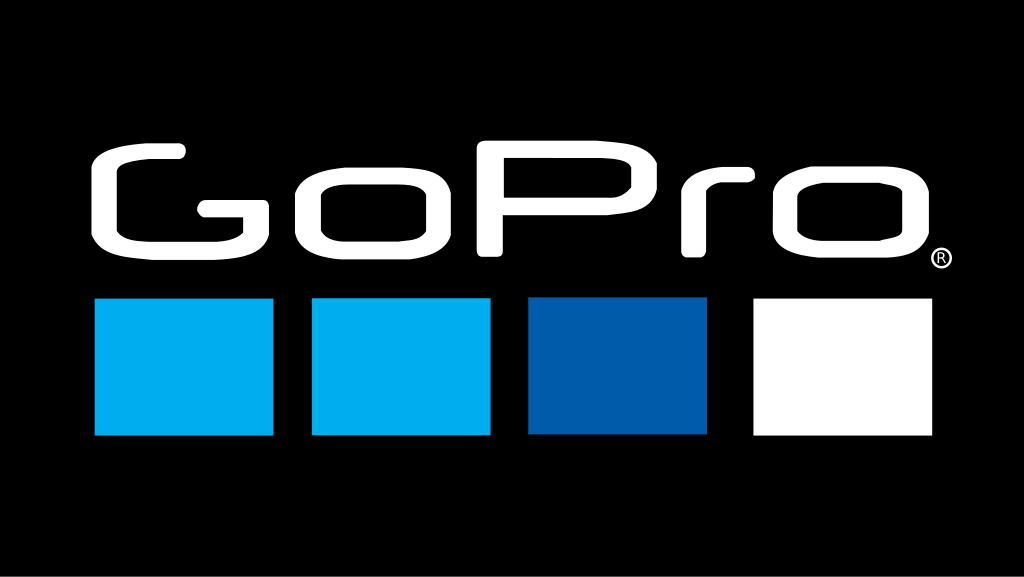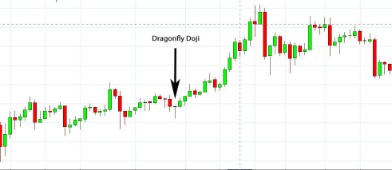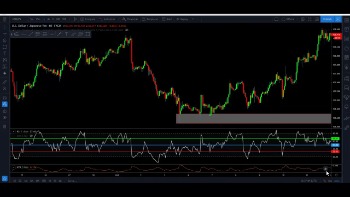
If you’re going to use triangle patterns, make sure you take positions only after you confirm a breakout in the price action of the security in question. Triangle chart patterns are used in technical analysis, which is a trading strategy that involves charts and patterns that help traders identify trends https://g-markets.net/ in the market to make predictions about future performance. Triangle patterns are aptly named because the upper and lower trendlines ultimately meet at the apex on the right side, forming a corner. These patterns are formed once the trading range of a stock or another security becomes narrow.

TrendSpider’s AI-driven algorithms also help traders identify the most reliable entry and exit points for descending triangle patterns. Descending triangle patterns are bearish and often form within downtrends in stocks as continuation patterns. The descending triangle pattern resembles a narrowing triangle with a horizontal line of support beneath the stock and a descending trend line or downtrend line above the stock.
Drawbacks of the Descending Triangle Chart Pattern
If a perpendicular line were drawn extending up from the left end of the horizontal line, a right triangle would form. Let’s examine each individual part of the pattern and then look at an example. In the chart above, you can see the height/depth of the descending triangle is equal to the price target. For our exit strategy, we’re going to use one of our favorite trading techniques.
In this strategy, traders simply need to wait for the descending triangle pattern to be formed. Once the pattern has been identified, the next step is to wait for the bullish trend to pick up. In most cases, you will find that the Heikin Ashi candlesticks turn bullish prior to the breakout. This can be used as an initial signal to prepare for long positions in anticipation of a breakout. The descending triangle is most commonly played as a bearish strategy because of its common occurrence in a bear market. Traders can wait for the price to reach support, then initiate short positions on the break below the triangle.
Nothing here is to be construed as an investment or financial or taxation advice nor to be considered as an invitation or solicitation or advertisement for any financial product. Readers are advised to exercise discretion and should seek independent professional advice prior to making any investment decision in relation to any financial product. Aditya Birla Capital Group is not liable for any decision arising out of the use of this information. Ultimately, each trader decides what confidence they attach to the signal and whether further data is needed to support a position. So, if this trader decided to short this stock with the expectation it would continue to drop in value, they might similarly exit the short once the price is around $240 per share. Increasing volume helps to confirm the breakout, as it shows rising interest as the price moves out of the pattern.
When a descending triangle pattern fails, the stock price fails to achieve the price target. Once the descending triangle pattern is confirmed, traders should consider opening a long or short position depending on the direction of the price move. Even on an hourly time frame descending triangle pattern typically takes weeks to form.
eCash Price Prediction: Will XEC Crypto Break Out From Here? – The Coin Republic
eCash Price Prediction: Will XEC Crypto Break Out From Here?.
Posted: Fri, 08 Sep 2023 22:48:00 GMT [source]
You are advised to consult an investment advisor in case you would like to undertake financial planning and / or investment advice for meeting your investment requirements. Ascending triangle patterns, therefore, offer insight into the likely direction of a stock. The trader might also consider coupling the long position with a stop-loss trade just outside the top trendline, limiting potential losses. In this case, the stop-loss trade would sell the stock if it fell to a specified price. The support does not allow the prices of the securities to move downward.
How Does a Descending Triangle Pattern Form?
At this point, the buyers of the issue outpace the sellers, and the stock’s price begins to rise. The supply line is the top line of the triangle and represents the overbought side of the market when investors are going out taking profits with them. Price patterns are often found when the price „takes a break,“ signifying areas of consolidation that can result in a continuation or reversal of the prevailing trend. They occur when there is space between two trading periods caused by a significant increase or decrease in price. For example, a stock might close at $5.00 and open at $7.00 after positive earnings or other news. A double bottom, on the other hand, looks like the letter W and occurs when the price tries to push through a support level, is denied, and makes a second unsuccessful attempt to breach the support level.
- But remember that the market can be very unpredictable and can swing in any direction at any time.
- We may suspend the operation of this Website for support or maintenance work, in order to update the content or for any other reason.
- Traders should monitor the stock over a medium-term period on an hourly or daily chart and be prepared to enter at any time to maximize potential profits.
- Eventually the lower trend line closes in the gap enough to cause impatient bidders to come off the fence in a buying spree that surges the price through the upper trend line resistance with heavy volume.
- The pattern is considered to be a bearish continuation pattern, as it typically occurs during a downtrend.
StocksToTrade’s top-of-the-line stock screener can help you spot this pattern. And its real-time paper trading feature can help you practice with simulated trades. So, to make things simple, we will walk you through 5 easy steps for identifying the pattern. To find your price target, take the thickest portion of the triangle and subtract it from the breakout point. Fortunately, regardless of the direction the formation implies, profitable trades can be produced using this charting technique. IU offers 3 trading courses with a track record of transforming brand-new traders into full-time trading professionals.
Finding High-Yield Dividend Stocks: 3 Tested Strategies
Additionally, the breakout candle must also produce a close below the flat support level for a valid trade setup. In this article, we’re going to explain the requirements of the descending triangle and how to spot it in real time. We’re also going to cover the psychology behind the descending triangle reversal. Again, like with bearish breakouts, the height of the thickest part of the triangle can be used to set a price target. Ultimately, each trader decides what confidence they attach to the signal and whether further data (i.e. additional analysis tools) is needed to support a position.
- We have this head and shoulders pattern that is ready for a massive breakout.
- Any recommendation or reference of schemes of ABSLMF if any made or referred on the Website, the same is based on the standard evaluation and selection process, which would apply uniformly for all mutual fund schemes.
- Typically, the descending triangle is more powerful when traded in the context of a trend.
- The illustration below shows what an “ideal” descending triangle pattern looks like, which is often labeled a descending wedge, as well.
- Besides his extensive derivative trading expertise, Adam is an expert in economics and behavioral finance.
There are many patterns used by traders—here is how patterns are made and some of the most popular ones. The descending triangle is a bearish pattern that is characterized by a descending upper trendline and a flat lower trendline that acts as support. This pattern indicates that sellers are more aggressive than buyers as price continues to make lower highs. The pattern completes itself when price breaks out of the triangle in the direction of the overall trend. In order to minimize the risk of a false breakout, traders should look for other indicators that will help them confirm a potential trend reversal.
Types of Triangle Chart Patterns
This would imply momentum is likely to continue driving the share price higher. A descending triangle pattern, like its ascending peer, is meant to provide insight into the potential future movements of a security, not an exact prediction of the next price. This contrasts with ascending triangle formations that occur when price lows are increasingly descending triangle stock higher, with price highs relatively unchanged. Once traders have at least two highs and two lows, lines can be drawn on a chart to discover whether a stock pattern triangle is forming. In theory, the more data points present, the more reliable the signal. Ascending triangle patterns work off the assumed psychology of investors.

The pattern is also used to signal a potential entry point for a short position. Triangles are similar to wedges (price patterns marked by converging trendlines) and pennants (continuation patterns that are formed when an asset shows a large movement), which are also used in technical analysis. They can be either a continuation pattern, if validated, or a powerful reversal pattern, in the event of failure. Traders use triangles to highlight when the narrowing of a stock or security’s trading range after a downtrend or uptrend occurs.
For example, if a long trade is taken on an upside breakout, a stop loss is placed just below the lower trendline. Volume tends to be stronger during trending periods than during consolidation periods. A triangle is a type of consolidation, and therefore volume tends to contract during an ascending triangle. As mentioned, traders look for volume to increase on a breakout, as this helps confirm the price is likely to keep heading in the breakout direction.
Once you master the Descending Triangle pattern, a simple chart pattern, you’ll gain a clear understanding of what goes on behind the price action. An ascending triangle is generally considered to be a continuation pattern, meaning that the pattern is significant if it occurs within an uptrend or downtrend. Once the breakout from the triangle occurs, traders tend to aggressively buy or sell the asset depending on which direction the price broke out.
A descending triangle pattern indicates the price of a security is likely to continue to fall. The formation reveals a price that is lowering over time and assumes this momentum will persist in the short term. The yellow circles represent the identified highs and lows which meet the criteria of a stocks descending triangle pattern formation. As a result, the top resistance line and bottom support line were drawn, forming the pattern. A descending triangle formation occurs when price highs are increasingly lower, but price lows are consistent.
When a support line is breached, you may decide to enter a short position. As previously mentioned, the formation requires at least two highs and two lows. Not only that, you need to identify increasingly lower highs along with relatively consistent lows. Ultimately, experience coupled with advanced technical tools offers traders the best chance of generating successful trade outcomes. These Terms of Use, as the same may be amended from time to time, will prevail over any subsequent oral communications between you and the Website and/or the processor bank.





